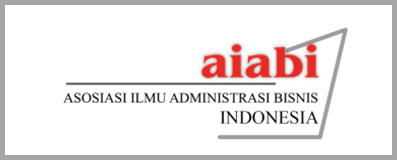Does brand image resonance as the determinant factor in cosmetic purchasing decision? A Case Study at Sari Ayu Cosmetic
DOI:
https://doi.org/10.31334/bijak.v19i2.2113Keywords:
Product of Quality, Brand Image Resonance, Price Perception, Purchase DecisionAbstract
The research aims to propose a model that can increase customer purchase decisions and propose a series of efforts to achieve that goal. The solution proposed in this study is rooted in the R-A theory by accelerating news sharing capability. Consumers are aware of the latest developments about the product, the quality, which leads to the resonance of a company's brand image. The population in this study was the buyer of cosmetic Sariayu Martha Tilaar. The sample used in this study was 100 respondents by purposive technique. Data collection technique by accidental using the designed questionnaire. The questionnaire has been tested for its validity and reliability before distribution. The regression analysis started with the classic assumption test (normality, multicollinearity, heteroskedasticity, and linearity test) afterward by multiple linear regression analysis. The model determined by the hypotheses testing applied F test, t-test, correlation test, and the coefficient of determination. The results showed that none of the single variables stand alone. All independent variables in weak significant effect individually. Therefore, it is suggested that the Sari Ayu Cosmetic management should make a significant effort to pay attention to brand image resonance and price perception in line with the needs and wants of their potential customers.References
Ahmad, N. S., Musa, R., & Harun, M. H. M. (2016). The Impact of Social Media Content Marketing (SMCM) towards Brand Health. Procedia Economics and Finance, 37(16), 331–336. https://doi.org/10.1016/s2212-5671(16)30133-2
Allender, W. J., & Richards, T. J. (2012). Brand Loyalty and Price Promotion Strategies: An Empirical Analysis. Journal of Retailing, 88(3), 323–342. https://doi.org/10.1016/j.jretai.2012.01.001
Arifiansyah, R., Aulia, M., & Riyanto, A. (2020). The influence of product quality, atmosphere, and location on customer satisfaction at the Cafe Hotel Mulia Senayan. Panorama Nusantara, 15(2), 72–84. https://erepository.stein.ac.id/index.php/erepositorystein/article/view/190/191
Baumert, T., & de Obesso, M. de las M. (2021). Brand antiquity and value perception: Are customers willing to pay higher prices for older brands? Journal of Business Research, 123(October 2020), 241–254. https://doi.org/10.1016/j.jbusres.2020.09.060
Benigno, P., & Karantounias, A. G. (2019). Overconfidence, subjective perception and pricing behavior. Journal of Economic Behavior and Organization, 164(August 2019), 107–132. https://doi.org/10.1016/j.jebo.2019.05.029
Bilanakos, C., Heywood, J. S., Sessions, J., & Theodoropoulos, N. (2018). Does demand for product quality increase worker training? Journal of Economic Behavior and Organization, 155, 159–177. https://doi.org/10.1016/j.jebo.2018.08.018
Brashear-Alejandro, T., Kang, J., & Groza, M. D. (2016). Leveraging loyalty programs to build customer-company identification. Journal of Business Research, 69(3), 1190–1198. https://doi.org/10.1016/j.jbusres.2015.09.014
Buil, I., de Chernatony, L., & MartÃnez, E. (2013). Examining the role of advertising and sales promotions in brand equity creation. Journal of Business Research, 66(1), 115–122. https://doi.org/10.1016/j.jbusres.2011.07.030
Burmann, C., Jost-Benz, M., & Riley, N. (2009). Towards an identity-based brand equity model. Journal of Business Research, 62(3), 390–397. https://doi.org/10.1016/j.jbusres.2008.06.009
Byun, K. A. (Kay), Jones, R. P., & Wooldridge, B. R. (2018). It is not always about brand: Design-driven consumers and their self-expression. Journal of Retailing and Consumer Services, 43(December 2017), 296–303. https://doi.org/10.1016/j.jretconser.2018.04.009
Cheng, S. Y. Y., White, T. B., & Chaplin, L. N. (2012). The effects of self-brand connections on responses to brand failure: A new look at the consumer-brand relationship. Journal of Consumer Psychology, 22(2), 280–288. https://doi.org/10.1016/j.jcps.2011.05.005
Curzi, D., Schuster, M., Maertens, M., & Olper, A. (2020). Standards, trade margins and product quality: Firm-level evidence from Peru. Food Policy, 91(November 2019), 101834. https://doi.org/10.1016/j.foodpol.2020.101834
Eloranta, V., & Turunen, T. (2015). Seeking competitive advantage with service infusion: A systematic literature review. In Journal of Service Management (Vol. 26, Issue 3). https://doi.org/10.1108/JOSM-12-2013-0359
Fahy, J., Farrelly, F., & Quester, P. (2004). Competitive advantage through sponsorship. European Journal of Marketing, 38(8), 1013–1030. https://doi.org/10.1108/03090560410539140
Farzad, M., El Ferouali, H., Kahraman, O., & Yagoobi, J. (2020). Enhancement of heat transfer and product quality using jet reattachment nozzles in drying of food products. Drying Technology, 1–19. https://doi.org/10.1080/07373937.2020.1804927
Ferguson, J. L., Brown, B. P., & Johnston, W. J. (2017). Partitioned pricing, price fairness perceptions, and the moderating effects of brand relationships in SME business markets. Journal of Business Research, 72(March 2017), 80–92. https://doi.org/10.1016/j.jbusres.2016.11.001
Filice, R. W., Mongan, J., & Kohli, M. D. (2020). Evaluating Artificial Intelligence Systems to Guide Purchasing Decisions. Journal of the American College of Radiology, 17(11), 1405–1409. https://doi.org/10.1016/j.jacr.2020.09.045
Ghapanchi, A. H., Wohlin, C., & Aurum, A. (2014). Resources contributing to gaining competitive advantage for open source software projects: An application of resource-based theory. International Journal of Project Management, 32(1), 139–152. https://doi.org/10.1016/j.ijproman.2013.03.002
Guo, J., Wang, X., & Wu, Y. (2020). Positive emotion bias: Role of emotional content from online customer reviews in purchase decisions. Journal of Retailing and Consumer Services, 52(October 2018). https://doi.org/10.1016/j.jretconser.2019.101891
Gupta, S., Malhotra, N. K., Czinkota, M., & Foroudi, P. (2016). Marketing innovation: A consequence of competitiveness. Journal of Business Research, 69(12), 5671–5681. https://doi.org/10.1016/j.jbusres.2016.02.042
Hasan, S. F. e, Lings, I., Neale, L., & Mortimer, G. (2014). The role of customer gratitude in making relationship marketing investments successful. Journal of Retailing and Consumer Services, 21(5), 788–796. https://doi.org/10.1016/j.jretconser.2014.06.007
Huang, Y., & Huddleston, P. (2009). Retailer premium own-brands: creating customer loyalty through own-brand products advantage. International Journal of Retail & Distribution Management Retailer, 37(11), 975–992. https://doi.org/http://dx.doi.org/10.1108/09590550910999389
Huber, F., Vollhardt, K., Matthes, I., & Vogel, J. (2010). Brand misconduct: Consequences on consumer-brand relationships. Journal of Business Research, 63(11), 1113–1120. https://doi.org/10.1016/j.jbusres.2009.10.006
Hughes, P., & Morgan, R. E. (2007). A resource-advantage perspective of product-market strategy performance & strategic capital in high technology firms. Industrial Marketing Management, 36(4), 503–517. https://doi.org/10.1016/j.indmarman.2006.01.003
Hunt, S. D. (1997). Resource-advantage theory and the wealth of nations: Developing the socio-economic research tradition. Journal of Socio-Economics, 26(4), 335–357. https://doi.org/10.1016/S1053-5357(97)90001-9
Kim, J., Jhang, J., Kim, S. (Sam), & Chen, S. C. (2021). Effects of concealing vs. displaying prices on consumer perceptions of hospitality products. International Journal of Hospitality Management, 92(Januari 2021), 102708. https://doi.org/10.1016/j.ijhm.2020.102708
Kotler, P., & Armstrong, G. (2015). Principles of marketing-global edition. Pearson.
Liu, C.-H. S., & Lee, T. (2016). Service quality and price perception of service: Influence on word-of-mouth and revisit intention. Journal of Air Transport Management, 52(April 2016), 42–54. https://doi.org/10.1016/j.jairtraman.2015.12.007
Liu, Y., Fernandez, J., Pu, Z., Zhang, H., Cao, L., Aguilar, I., Ritz, D., Luo, R., Read, A., Laures, A., Lan, K., Ubiera, A., Smith, A., Patel, P., & Liu, A. (2020). Simultaneous Monitoring and Comparison of Multiple Product Quality Attributes for Cell Culture Processes at Different Scales Using a LC/MS/MS Based Multi-Attribute Method. Journal of Pharmaceutical Sciences, 109(11), 3319–3329. https://doi.org/10.1016/j.xphs.2020.07.029
Lv, Z., Jin, Y., & Huang, J. (2018). How do sellers use live chat to influence consumer purchase decision in China? Electronic Commerce Research and Applications, 28, 102–113. https://doi.org/10.1016/j.elerap.2018.01.003
Piveteau, P., & Smagghue, G. (2019). Estimating firm product quality using trade data. Journal of International Economics, 118, 217–232. https://doi.org/10.1016/j.jinteco.2019.02.005
Rybaczewska, M., Sparks, L., & SuÅ‚kowski, Å. (2020). Consumers’ purchase decisions and employer image. Journal of Retailing and Consumer Services, 55(February), 0–7. https://doi.org/10.1016/j.jretconser.2020.102123
Shafeey, T. El, & Trott, P. (2014). Resource-based competition: Three schools of thought and thirteen criticisms. European Business Review, 26(2), 122–148. https://doi.org/10.1108/EBR-07-2013-0096
Steinhauser, J., Janssen, M., & Hamm, U. (2019). Consumers’ purchase decisions for products with nutrition and health claims: What role do product category and gaze duration on claims play? Appetite, 141(June), 104337. https://doi.org/10.1016/j.appet.2019.104337
Sugiyono. (2017). Metode Penelitian Kuantitatif, Kualitatif, dan R & D (Quantitative Research Methods, Qualitative, and R & D). Alfabeta.
Vargo, S. L. (2007). On A Theory of Markets and Marketing: From Positively Normative to Normatively Positive. Australasian Marketing Journal, 15(1), 53–60. https://doi.org/10.1016/S1441-3582(07)70029-0
Yu, Y., Wang, Y., & Liu, Y. (2020). Product quality and quantity with responsive pricing. International Journal of Production Research. https://doi.org/10.1080/00207543.2020.1836418
Zhang, H., Zhao, Z., Nie, B., Lyu, C., & Liu, X. (2021). Selenium loss and changes in product quality during cooking of selenium enriched potato tubers. Journal of Food Composition and Analysis, 96(1), 103728. https://doi.org/10.1016/j.jfca.2020.103728
Zhang, Z., Wang, P., & Xu, H. (2020). Executives’ preference for integrity and product quality: Evidence from the Chinese food industry. Economic Modelling, 90(Agustus 2020), 374–385. https://doi.org/10.1016/j.econmod.2019.11.026
Downloads
Additional Files
Published
Issue
Section
License

This work is licensed under a Creative Commons Attribution-ShareAlike 4.0 International License
Please find the rights and licenses in Majalah Ilmiah Bijak By submitting the article/manuscript of the article, the author(s) agree with this policy. No specific document sign-off is required.
- License
The commercial use of the article will be governed by the Creative Commons Attribution license as currently displayed on Creative Commons Attribution-ShareAlike 4.0 International License.
2. Author(s)' Warranties
The author warrants that the article is original, written by stated author(s), has not been published before, contains no unlawful statements, does not infringe the rights of others, is subject to copyright that is vested exclusively in the author and free of any third party rights, and that any necessary written permissions to quote from other sources have been obtained by the author(s).
3. User Rights
Majalah Ilmiah Bijak spirit is to disseminate articles published are as free as possible. Under the Creative Commons license, Majalah Ilmiah Bijak permits users to copy, distribute, display, and perform the work for non-commercial purposes only. Users will also need to attribute authors and Majalah Ilmiah Bijak on distributing works in the journal and other media of publications.
4. Co-Authorship
If the article was jointly prepared by more than one author, any authors submitting the manuscript warrants that he/she has been authorized by all co-authors to be agreed on this copyright and license notice (agreement) on their behalf, and agrees to inform his/her co-authors of the terms of this policy. Jurnal Bijak will not be held liable for anything that may arise due to the author(s) internal dispute. Majalah Ilmiah Bijak will only communicate with the corresponding author.
5. Miscellaneous
Majalah Ilmiah Bijak will publish the article (or have it published) in the journal if the article’s editorial process is successfully completed. Jurnal Bijak editors may modify the article to a style of punctuation, spelling, capitalization, referencing and usage that deems appropriate. The author acknowledges that the article may be published so that it will be publicly accessible and such access will be free of charge for the readers as mentioned in point 3.
Every accepted manuscript should be accompanied by "Copyright Transfer Agreement"prior to the article publication.





1.png)




